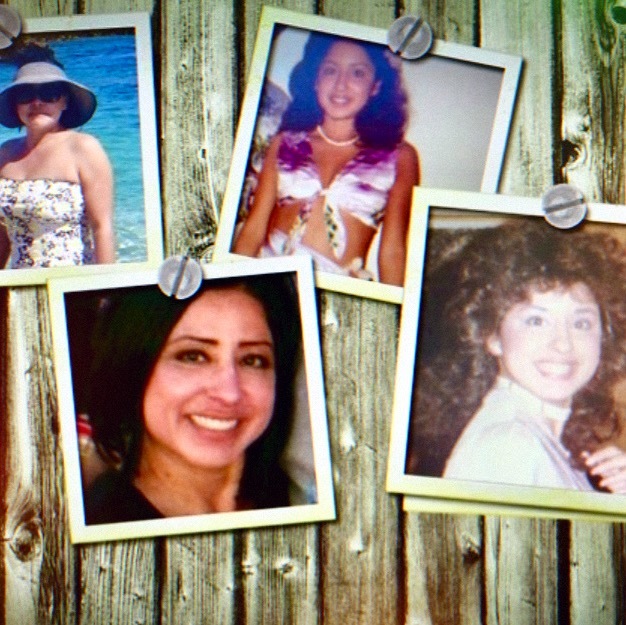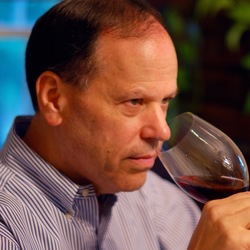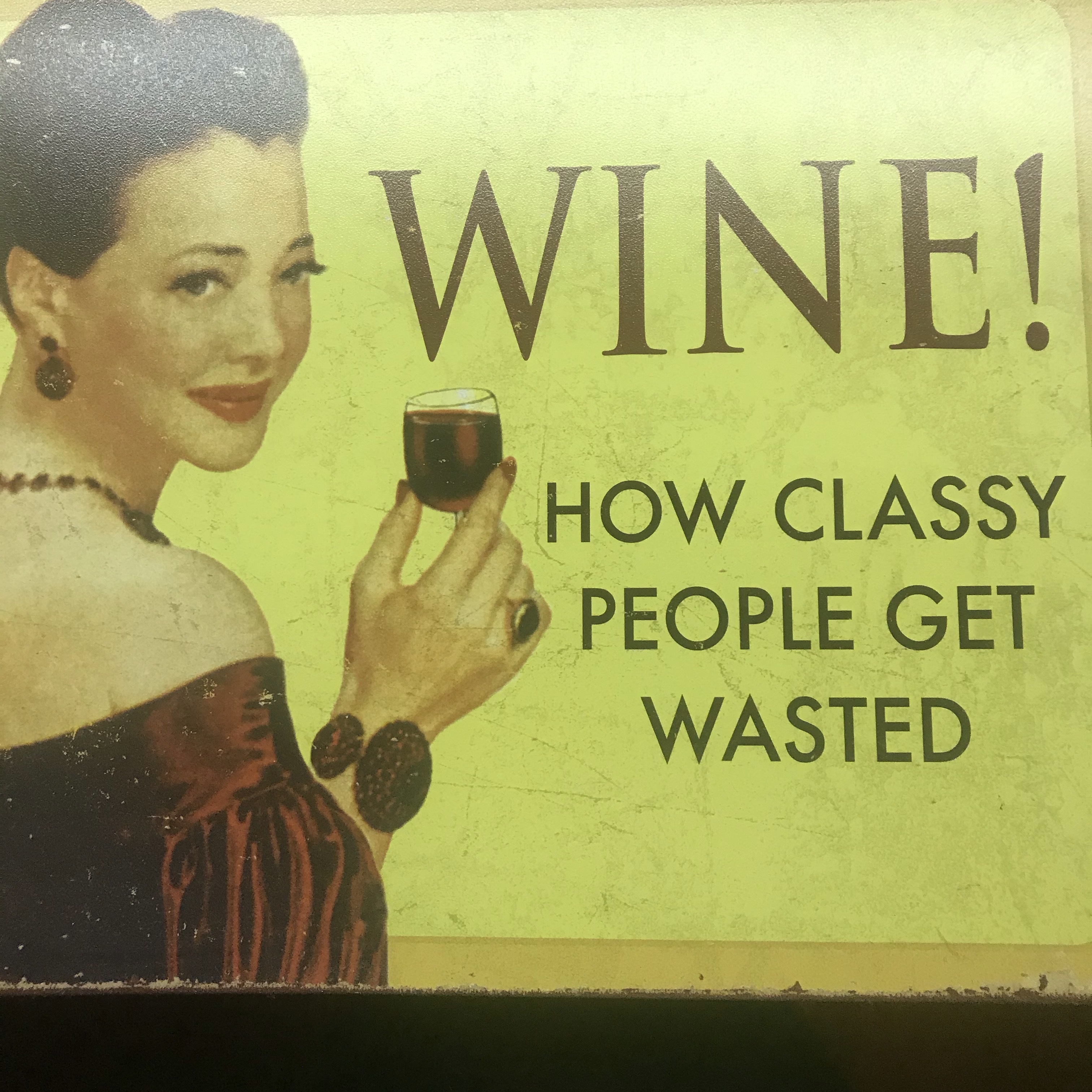Baron Louis Iii
Château de Montfaucon
Baron Louis Côtes du Rhône Red Rhône Blend 2007
Glad I’m stocked up. So soft after some time. Def get them cherries. Paired with that cast iron filet. — 7 years ago
Château La Lagune
Haut-Médoc Red Bordeaux Blend 2006
On the nose; floral fruits of blackberries, dark cherries, black plum, plum, blue fruits, black raspberries, limestone, dark raspberries, black cherry cola, dark rich soil, vanilla, cinnamon, volcanic minerals, anise, violets and fresh red floral bouquet. The body is full and the tannins are about half resolved. The structure is still fairly big as is the tension with good length. The fruits are rich & ripe; blackberries, dark cherries, black plum, plum, blue fruits, black raspberries, limestone, dark raspberries, black cherry cola, dark rich soil, vanilla, cinnamon, touch of clove, darker spice, a little bit of Christmas cake, suede leather, crushed dry rocks, volcanic minerals, anise, violets, lilacs, and fresh red floral bouquet. The acidity is round, good but could be better. The long finish is rich, fruit driven with just the right mix of fruit, earth and medium spice. Producer notes and history...Chateau La Lagune has a long history that dates all the way back to the 16th century, under King Henri IV. The same time the Dutch engineers started draining the water from the marshes and swamps making way for all those Pauillac Chateau’s. Their beautiful chateau was built in 1715. The chateau was designed by architect, Baron Victor Louis, who earned fame for his design of the Grand Theater in Bordeaux. By 1730, Chateau La Lagune was already known for producing Bordeaux wine. The property remained under the ownership of the well known de Seze family for several generations. Moving ahead a few centuries to the modern era of the 1950’s, Chateau La Lagune experienced problems caused by the end of World War II along with the economic crisis. As well, there was the great frost of 1956; which destroyed a large portion of the vineyards in Bordeaux. In 1958, George Brunette purchased Chateau La Lagune with only 5 hectares still planted with vines. It was George Burnette that began a large replanting Chateau La Lagune. However, George Brunette also took an economic hit during that era and was forced to sell Chateau La Lagune to the Ducellier family of Champagne Ayala. In 2000, both Chateau La Lagune and Champagne Ayala were sold to the Frey family. The Frey family sold Champagne Ayala and bought the legendary estate of Jaboulet in the Rhone, which of course includes the crown jewel of the region, Jaboulet La Chapelle. The Frey family also owns a substantial piece of Billecart-Salmon. In 2014, the Frey family bought Chateau de Corton Andre and its 7 hectares of vines in the Cote de Beaune area of Burgundy. Caroline Frey (shown in the right photo) is the manager and Winemaker of Chateau La Lagune, as well as their estate in Hermitage, Jaboulet. In November, 2013, La Lagune purchased the 8.9 hectare estate of Chateau D’Arche, from Mahler Besse. Chateau D’Arche is located in the commune of Ludon, not far from La Lagune. This purchase made more than economic sense for the property, as the vines were once part of La Lagune when the original 1855 Classification took place. La Lagune has 72 hectares (180 acres) under vine. Their grape variety is a distribution of 60% Cabernet Sauvignon, 20% Merlot, 10% Cabernet Franc, and 10% Petit Verdot. Chateau La Lagune is fermented in a total of 72 different, temperature controlled, stainless steel vats that vary in size from 22 hectoliters to 200 hectoliters to allow for parcel by parcel vinification. The vats are laid out in a functional and architecturally interesting pattern (Shown in the bottom photo). Malolactic fermentation takes place in vat. The wine is blended before the aging process begins. This is similar to what takes place at Chateau Haut Brion. La Lagune is aged in between 50% and 60% new French oak barrels for 18 months. — 8 years ago
Louis M. Martini
Alexander Valley Cabernet Sauvignon 2014
Half the the price of Lot 1 2012,
Not seeing 97 points from parker, but still better value than the 12 Lot 1.
@Rob Brobst III hooked me up with a 6 pack of this, — 8 years ago

Les Griffons de Pichon Baron
Pauillac Red Bordeaux Blend 2015
Estate was founded in the late 17th Century. This period was known as the Grand Siecle, or "great century", in reference to Louis XIV's 1661 accession to the French throne. This second label from Pichon Baron is deep Ruby with aromas of black fruits, cacao and sweet spice. On the palate flavors of blackberry and black cherry with espresso, cacao and licorice. Fine tannins, long finish, ending with fruit, cedar and spice. — 3 years ago
Château Duhart Milon
Pauillac Cabernet Sauvignon - Merlot Blend 2006
The 06 vintage was more highly praised by the Bordelais than it delivered. That’s not to say, some producers didn’t deliver.
This 06 is not at its peak...still needs a few years. Will it be a wine that blows you away? Not likely but, it will deliver nice fruit, earth & balance. Especially, with a Ribeye.
The nose shows; ripe; blackberries, dark cherries, black raspberries, baked strawberries, dry cranberries & some black plum. Saddle-wood, limestone minerals, dry stones, cinnamon, soft spice, light vanilla, black rich earth, touch of black licorice and red & dark fresh florals.
The body is round and a little lean but puts on weight with food and decanting. The structure, length & tension are falling into place. The fruits are ripe and expressive. Blackberries, dark cherries, black raspberries, baked strawberries, haunting blue fruits, dry cranberries & some black plum. Saddle-wood, touch herbaceous, mint, limestone minerals, dry clay, dry stones, cinnamon, soft spice, cola, light vanilla, black rich earth, touch of black licorice and red & dark fresh florals. The acidity is round and beautiful. The finish is on the leaner side but, well balanced and lasts a full minute. 9.1 without the Ribeye, 9.2 with it.
Photos of, Duhart Milon, Cabernet ready to to be pressed, wine making facilities and their barrel room.
Producer history and notes...the Rothschild family is divided into two sects for lack of a better word. There are the ones that own Mouton Rothschild and Cleric Milon etc. and the other owns Lafite and Duhart. The two sides of the families don’t necessarily get along. However, they are two of the oldest/wealthiest families in recorded history.
Duhart Milon was originally known only as Chateau Milon. At one time the estate was the second wine of Chateau Lafite.
The story about how this came to be is interesting. The owner of Lafite at that time was the Marquis Nicolas-Alexandre de Segur. King Louis XV called him “The Wine Prince” because of his extensive vineyard holdings in Bordeaux. The Milon vineyards were well regarded but, not as good as Lafite, which is how the wine came to be thought of as the second wine for Lafite.
In 1815, the property was considered by some people as a fourth growth Bordeaux wine in the making. In those days, the wine was sold under the name of Chateau Mandavy-Milon. Between 1830 and 1840, the Casteja family inherited the estate.
The label of Duhart Milon, according to family tradition came about from an old legend written about one of their ancestors, Sir Duhart. Sir Duhart, was rumored to have been a pirate for Louis XV. He retired in Pauillac. The “Pirate’s House” on the Pauillac port existed up to the 1950’s. That original building inspired the label for the Duhart-Milon wines.
The Casteja family remained in possession of Duhart Milon until the first part of the 20th century. At the time, Chateau Duhart Milon was one of larger Pauillac estates with around 50 hectares of vines.
In 1937, the result of successive inheritances led to the sale of Duhart Milon. The Left Bank property went through five different owners in just 25 years. As well, the vineyards were split up and with the frost of 1956, the quality of Duhart Milon continued declining until the Rothschild family purchased the property in 1962.
At that time of the sale, Chateau Duhart Milon included 110 hectares of land, of which only 17 hectares were planted with vines. The entire vineyard was in desperate need of replanting. Major renovations were urgently needed in the vineyards, which demanded work on the drainage and replanting.
The size of their vineyards were also increased with the purchase of other parcels adding to the size of their Medoc holdings. New cellars needed to be built as well.
Chateau Duhart Milon remains one of the few 1855 Classified Growth estates without an actual Chateau. At Duhart, all you will find are the cellars, vatting rooms and barrel storages.
During the period of 1970 to 2000, the vineyards nearly doubled in size! Additionally, they constructed new cellars, renovated and modernized their wine making facilities as well in 2003. By 2008, the wine of Duhart Milon increased in quality, stature and price.
Much of the price increase had to do with the association with Chateau Lafite Rothschild, which had by that time, become the most in-demand, collectible wine in China. By the time the 2015 vintage was offered, prices had dropped to a more affordable price level due to changes in Chinese laws regarding client gifts/bribes.
The 152 hectare vineyard of Chateau Duhart Milon includes; 76 hectares of vines planted to 67% Cabernet Sauvignon and 33% Merlot. This makes Chateau Duhart Milon one of the few 1855 Classified Growths with only two grape varieties planted in their vineyards.
The average age of the vines are 30 years old. The vineyard is planted to a vine density of 7,500 vines per hectare.
Duhart Milon vineyards are located in northern Pauillac, on the western side of Chateau Lafite Rothschild, on the Milon hillside, which is not far from the Carruades plateau...now Lafite’s second wine. This places the vineyard quite close to Chateau Mouton Rothschild and Chateau Clerc Milon. However, because of micro climates, this is a slightly cooler terroir, due to its northern exposure.
The naturally cooler soils provides more freshness to the wine, and allows for later picking. The terroir of Chateau Duhart Milon is a combination of gravel, sand and limestone soils. The Duhart Milon vineyards are unique in Pauillac, as the vines are for the most part, located in 1 single, large parcel.
The vinification of Chateau Duhart Milon takes place in temperature controlled stainless vats. Malolactic fermentation takes place in vat. Chateau Duhart Milon is then aged in an average of 50% new French oak barrels for 14 to 16 months, depending on the vintage.
There is a second wine, Moulin de Duhart, that was created in 1986. There is also a third wine produced by the estate, Baron de Milon. — 7 years ago


Louis M. Martini
Lot No. 1 Napa Valley Cabernet Sauvignon 2013
Lot 1 is new to me, but after getting a Parker 💯 for the 2013 vintage it will be on my radar from now on. What makes it a 💯 pointer I have no idea? I'm not that educated, but I would buy it again at release price, but not worth the $300.00 its going for now🙄
Thanks @Rob Brobst III for the hook up of 3 bottles, — 9 years ago


Château d'Armailhac
Pauillac Red Bordeaux Blend 2004
🎄 Advent Halfy Calendar Day 07 🎄
🎅 Santa says this lovely wine would make him dance like the chap on the label, but naked of course for Mrs Claus 🤶 Ho Ho Ho
📝 I say this £42 halfy is at prime drinking & darn quafftastic 😍
⏩ 🍾 Mrs E got Louis Roederer Brut Premier NV
📍 Baron Philippe de Rothschild Chateau d'Armailhac 2004
🏵 92 points better than rated by “pros” in 2007 😉
🍇 Cabernet Sauvignon 58%, Merlot 25 %, Cabernet Franc 14%, Petit Verdot 3%
🍷 Deep dark ruby
👃 Smokey oak, pencil lead, gravel & minerals through earthy blackcurrant & dark plum w/ herbs, raspberry liquorice, leather & mocha
👄 Med body of creamy ripe rich blackcurrant in cocoa w/ dirty liquorice, plum, red berry tones, blackberry & minerals
🎯 Long touch dry mineral infused plummy dark fruit mocha liquorice linger
— 7 years ago
Château Cos d'Estournel
Saint-Estèphe Red Bordeaux Blend 1991
Is there any meal better than steak (Ribeye) and well aged Claret? This is another 1991 Bordeaux experiment of mine. 1991 was a vintage with horrible frosts and a less than favorable growing season, right? A vintage critically panned. This is my 3rd recent 91 from a good producer. And again, it didn’t disappoint. Like 97 and 07, it’s better with the right bottle age than young. Magic evolution happened in the bottle way down the road. This 91 is in great form with a fair amount of life ahead of it. On the nose; a little ripe fruit funk, wonderful dark & lighter red cassis, ripe blackberries, dark cherries, poached strawberries, plums, hues of blueberries, black raspberries, dry cranberries, vanilla, light cinnamon, rich, black turned earth, cedar, soft leather, dry stones, dry top soil, notes of dry herbs and fresh & dry red flowers. The body/palate is medium, round, ripe & still fresh. The tannins nearly completely resolved. Ripe, floral fruits of; blackberries, dark cherries, poached strawberries, plums, hues of blueberries, black raspberries, dry cranberries & half cooked rhubarb. Vanilla, light cinnamon, touch of clove & nutmeg, rich, black turned earth, cedar, soft leather, dry stones, dry crushed rocks, dry top soil, notes of dry herbs, a little band-aid and fresh & dry red flowers. The acidity drips over the palate and the long, well balanced, still structured, nice tension, good length finish lasts over a minute. Again, love & appreciate the 12.5% alcohol. What a beauty with and without the steak. Next time you’re in your fine wine retail shop and see a quality producers 91 that’s been well stored, buy it and have it with a Ribeye. Photos of; their exotic Estate, Chateau interior, newer barrel room and their vines as viewed from the front of the Chateau that are across the road. Producer notes and history...Cos d’Estournel has a long distinguished history in the St. Estephe. Louis Gaspard d’Estournel, gave his name to the estate after founding in 1811. It did not take long before Cos d’Estournel became famous with wine lovers and royalty all over the world. In those early days, Cos d’Estournel did not sell through Negociants. The owner preferred selling his wine directly to his customers. In fact, Cos d’Estournel was exported to numerous countries across the globe, with a large portion of the production being sold to India. It was that connection to India that inspired much of the unique, east Indian design we see at Cos d’Estournel today. Cos d’Estournel was one of the first Bordeaux Chateaux’s to bottle, label and sell their own wine. This practice continued until the death of Louis Gaspard d’Estournel in 1852. If you’re at the property, the statue on the bench in the front courtyard is of the founder, Louis Gaspard d’Estournel. The Estate was then purchased by an owner that sold their wines on the Place de Bordeaux using the negociant system. If the Chateau was not selling their wines through the negociant system, it would never have been included in the 1855 Classification. Imagine that! So, it turned out to be a fortuitous decision. Cos d’Estournel was sold to the Charmolue family owners of the neighboring Estate of Chateau Montrose. They continued to own the estate until 1917, when it was bought by Fernand Ginestet. This purchase was the beginning of the next major step in the development of Cos d’Estournel. Decades later, the grandchildren of Fernand Ginestet, Jean-Marie Prats, Yves Prats and Bruno Prats took over ownership and management of Cos d’Estournel. In 1995, Bruno Prats sold the property to the Merlaut family, owners of the Taillan Group. The next era in the development of Cos d’Estournel took place in 2000, when Cos d’Estournel was bought by the industrious and wealthy Michel Reybier, who earned his fortune in the food industry. Michel Reybier hired the son of Bruno Prats, Jean-Guillaume Prats to manage Cos d’Estournel. Things further improved with the efforts of Jean-Guillaume Prats who helped design the most modern wine making at that time. A complete renovation of Cos d’Estournel took place in not only the wine making facilities and cellars, but in parts of the Chateau as well. While the wine making facilities are completely modern with their 100% gravity design, the outward appearance retained the original design and feeling that has always been a part of Cos d’Estournel. On October 15, 2012, Jean Guillaume Prats announced he was leaving Cos d’Estournel to join LVMH (Pichon Baron). Jean Guillaume Prats was replaced by Aymeric de Gironde. Following the departure of Aymeric de Gironde in 2017, the owner, Michel Reybier took over managing the Estate. What makes the remodel special is that the cellars of Cos d’Estournel are entirely operated by gravity. There are no pumps of any kind to force the wine. The purpose is to allow a gentleness to the wine and improve its purity and allow for the expression of their terroir. It set a new benchmark for cellars not only in the Left Bank, but in all of Bordeaux. Perhaps, the most inventive part of the cellars is the four 100 hectoliter lift tanks or wine elevators that replace the pumps used in the traditional pumping over and the racking off processes, which introduce air and often destabilize the marc. From the moment the grapes arrive, everything travels by the flow of gravity. Jean Guillaume Prats called this process a “pumpless pump over.” The 91 hectare vineyard of Cos d’Estournel is planted to 65% Cabernet Sauvignon, 33% Merlot, 1% Cabernet Franc and 1% Petit Verdot. The vineyard is located extremely close to the border between Pauillac and Saint Estephe at the southern tip of the Saint Estephe. The Estate has very old Merlot vines as well, which date back more than 100 years. Part of the terroir is situated on the hill of Cos, which is at a high elevation for the Medoc at 20 meters. They also make a second wine called Pagodes de Cos. This is a great wine to buy in very good vintages. Especially, if your budget prohibits you from purchasing their first wine. — 8 years ago









Doug Powers
Really lovely Lirac, Grenache and Syrah show mostly, the proprietor (Rodolphe des Pins) (in my opinion!!) dragged his feet too long in joining the Lirac appellation, but his wines have LONG been undervalued and are fantastic at their pricepoint, I personally have more bottles of this, which I expect to age well!! — a month ago